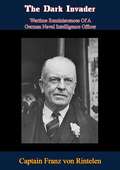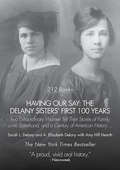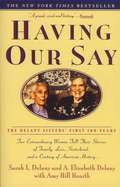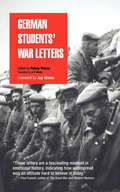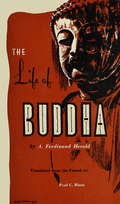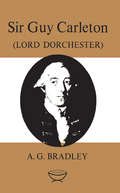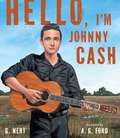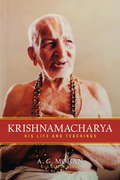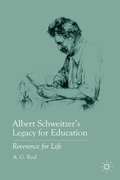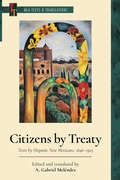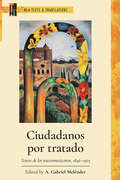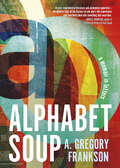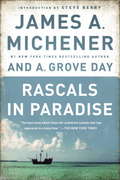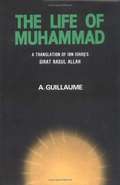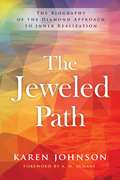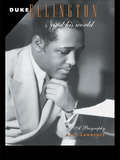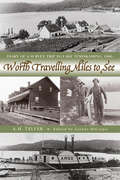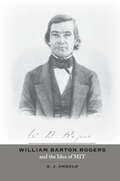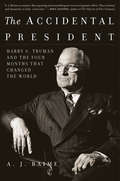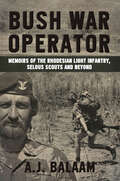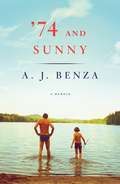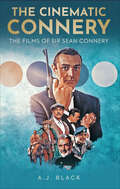- Table View
- List View
The Dark Invader: Wartime Reminiscences Of A German Naval Intelligence Officer
by A. E. W. Mason Captain Franz von RintelenMen engaged in Intelligence Services during a war divide their particular opponents into two classes. One consists of neutrals who go out of their way to help the enemy for the sake of gain; and for such men we have not much compassion should they fall upon misfortune. They are interfering in great matters with which they are not concerned, in order to make a little money. The other class is made up of men who, abandoning the opportunities of their own careers, go secretly away in the sacred service of their country, play a lone hand, and run the gauntlet of foreign laws. For such we can have nothing but respect while the fight is going on and friendship when it is over.Captain Franz von Rintelen belongs to this latter class. A young naval officer with every likelihood of reaching to high rank, he went abroad in 1915 and only saw his own country again after the lapse of six strenuous and, in part, unhappy years. The history of those years is told in this book. The conversations which he records depend, of course, upon his memory; the main facts we are able to check, and we know them to be exact.The book is written, as one would expect from his record, without the least rancour, and I think I am not trenching upon the province of criticism when I add--with admirable simplicity. It is a record which is more detailed and concerned with endeavours on a vastly wider scale than is usual in such accounts. One cannot, I think, read it without recognising, apart from the magnitude of the things attempted and done, the terrific strain under which he lived; and this gives a moving and human quality to the narrative which sets it a little apart from any other which I have read. Those who are most saturated in spy stories will find much to surprise them in this volume, and they will not be likely to forget the poignant minutes which he spent on the top of an omnibus in London and the way in which those minutes ended.Finally, here is as good an argument against War as a man could find in twenty volumes devoted to that subject alone.
Having Our Say
by Amy Hill Hearth Sarah L. Delany A. Elizabeth DelanyIn their 200-plus combined years of living, centenarians Sadie and Bessie Delany have seen it all. They saw their extraordinary father, who was born into slavery, become America's first elected black Episcopal bishop. They saw their dedicated mother--a woman of mixed racial heritage who was born free-work fulltime as a teacher and school administrator while bringing ten children into the world, all of whom would become college-educated, successful professionals. They saw the post-Reconstruction South, the beginning of Jim Crow laws, Harlem's Golden Age, and the mid-twentieth century Civil Rights movement--and, in their own feisty, wise, inimitable way, they've got a lot to say about it.A firsthand account of American history from a rarely-heard perspective, Having Our Say teaches us about surviving, thriving, and embracing life, no matter what obstacles are in our way. Having Our Say, first published in 1993, is considered a classic of the oral history genre.Dr. A. Elizabeth ("Bessie") Delany and Sarah L. ("Sadie") Delany were born in Raleigh, North Carolina, on the campus of St. Augustine's School (now College). Their father, born into slavery, was an administrator at the school and America's first elected black Episcopal bishop. Sarah received her bachelor's and master's degrees from Columbia University and was New York City's first appointed black home economics teacher at the high school level. Elizabeth received her degree in dental surgery from Columbia University and was the second black woman licensed to practice dentistry in New York State. The two sisters spurned offers of marriage, choosing instead to pursue their careers. In 1960, they retired and bought a house in Mt. Vernon, New York, where they lived in obscurity until 1991, when a journalist named Amy Hill Hearth tracked them down and interviewed them for a feature story in The New York Times. Ms. Hearth worked closed with the sisters for the next two years to expand her story into book form. The result was Having Our Say, a New York Times bestseller for 113 weeks that was adapted to the Broadway stage and for an award-winning telefilm. Bessie Delany died in 1995; Sadie in 1999. They are buried in Raleigh beside their parents.AMY HILL HEARTH began her career as a newspaper reporter. HAVING OUR SAY is her first book. She has since written six more nonfiction books and an acclaimed novel, MISS DREAMSVILLE AND THE COLLIER COUNTY WOMEN'S LITERARY SOCIETY."A proud, vivid oral history."-Newsweek magazine"I felt proud to be an American citizen reading Having Our Say...the two voices, beautifully blended...evoke an epic history...often cruel and brutal, but always deeply humane."-- The New York Times Book Review"The Lord won't hold it against me that I'm colored because he made me that way! He thinks I am beautiful! And so do I even with all my wrinkles!"-- Bessie Delany, at age 102"This Jim Crow mess was pure foolishness. It's not law anymore, but it's still in some people's hearts. I just laugh it off, child. I never let prejudice stop me from what I wanted to do in this life."-- Sadie Delany, at age 104"This book is destined to become a classic! The Delany sisters--leave to us the best of legacies-two sets of dancing footprints for us to follow all our days ahead."-- Clarissa Pinkola Estés, author of Women Who Run With the Wolves"An unforgettable testimony to the dignity and courage of African-American women."-- Shirlee Taylor Haizlip
Having Our Say: The Delany Sisters' First 100 Years
by Amy Hill Hearth Sarah L. Delany A. Elizabeth DelanyWarm, feisty, and intelligent, the Delany sisters speak their mind in a book that is at once a vital historical record and a moving portrait of two remarkable women who continued to love, laugh, and embrace life after over a hundred years of living side by side. Their sharp memories show us the post-Reconstruction South and Booker T. Washington; Harlem's Golden Age and Langston Hughes, W. E. B. Du Bois, and Paul Robeson. Bessie breaks barriers to become a dentist; Sadie quietly integrates the New York City system as a high school teacher. Their extraordinary story makes an important contribution to our nation's heritage--and an indelible impression on our lives.
German Students' War Letters
by Jay Winter A. F. Wedd Philipp WitkopOriginally appearing at the same time as the pacifist novel All Quiet on the Western Front, this powerful collection provides a glimpse into the hearts and minds of an enemy that had been thoroughly demonized by the Allied press. Composed by German students who had left their university studies in order to participate in World War I, these letters reveal the struggles and hardships that all soldiers face.The stark brutality and surrealism of war are revealed as young men from Germany describe their bitter combat and occasional camaraderie with soldiers from many nations, including France, Great Britain, and Russia. Like its companion volume, War Letters of Fallen Englishmen, these letters were carefully selected for their depth of perception, the intensity of their descriptions, and their messages to future generations. "Should these letters help towards the establishment of justice and better understanding between nations," the editor reflects in his introduction, "their deaths will not have been in vain." This edition contains a new foreword by the distinguished World War I historian Jay Winter.
The Life of Buddha
by Paul C. Blum A. Ferdinand HeroldTHE LIFE OF BUDDHA Based on prolonged study of Indian legends, poems,history) and literature, The Life of Buddha not only adds to the actual knowledge of the facts surrounding the life of the Lord Buddha, but it also renders intelligible much that has hitherto mystified the Western student of the Orient. With great clarity, the author brings out the modes of life the sense of values, the technique of meditation, and the daily life of the Lord Buddha. This book should have appeal to a great variety of readers; packed with stimulating information, it is of interest to the student of Eastern religion and mysticism and the lover of Asiatic art, as well as to those concerned with philosophy, with the psychology of religion, and also to the general reader who hopes to gain an insight into the Orient. This vivid account of Buddha's life shows clearly how the values and manners set down by this man swept through India, Burma, Indo-China, and Ceylon, across China and Korea, and into Japan; and howthe daily life of a man who lived over two thousand five hundred years ago has become an inspiration, not only to millions of Chinese, Koreans, and Japanese,but also to increasing numbers of Westerners as well.
Sir Guy Carleton: Lord Dorchester
by A. G. BradleyThis biography of Sir Guy Carleton was first published in the famous Makers of Canada series in 1907, and re-issued in 1926 with supplementary notes incorporating later research by A.L. Burt. When it first appeared it was reviewed by William Wood, who described it as "a really good book on one of the greatest makers of the Empire."
Hello, I'm Johnny Cash
by G. Neri A. G. FordThere’s never been anyone like music legend Johnny Cash. His deep voice is instantly recognizable, and his heartfelt songs resonate with listeners of all ages and backgrounds. G. Neri captures Johnny’s story in beautiful free verse, portraying an ordinary boy with an extraordinary talent who grew up in extreme poverty, faced incredible challenges, and ultimately found his calling by always being true to the gift of his voice. A. G. Ford’s luscious paintings of the dramatic southern landscape of Johnny Cash’s childhood illuminate this portrait of a legend, taking us from his humble beginnings to his enormous success on the world stage.
Krishnamacharya: His Life and Teachings
by A. G. MohanHere is a personal tribute to "the father of modern yoga" Sri Tirumalai Krishnamacharya (1888-1989), written by one of his longtime disciples. Krishnamacharya was a renowned Indian yoga master, Ayurvedic healer, and scholar who modernized yoga practice and whose students--including B. K. S. Iyengar, K. Pattabhi Jois, T. K. V. Desikachar, and Indra Devi--dramatically popularized yoga in the West In this book, the author, A. G. Mohan, a well-respected yoga teacher and yoga therapist, draws on his own memories and notes, and Krishnamacharya's diaries and recorded material, to present a detailed and fascinating view of the man and his teachings, and his own warm and inspiring relationship with the master. This portrait of the great teacher will be a compelling and informative read for yoga teachers and students who truly want to understand the source of their tradition and practice.
Albert Schweitzer’s Legacy for Education
by A. G. RudThis is the first book devoted to the study of the thought of Albert Schweitzer as it relates to educational theory and practice. Rud argues that Schweitzer's life and work offer inspiration and timely insights for both educational thought and practice in our new century.
Citizens by Treaty: Texts by Hispanic New Mexicans, 1846–1925 (MLA Texts and Translations #46)
by A. Gabriel MeléndezThis volume gathers works produced by Spanish-speaking people of Mexican descent who became United States citizens by virtue of the Treaty of Guadalupe Hidalgo (1848) and whose ancestors had resided in New Mexico, Arizona, California, Texas, and Colorado for hundreds of years prior to the Mexican-American War. The writings in this collection, drawn from various genres, were composed at a time marked by the confluence of tradition and change. In addition to facing unprecedented challenges to their rights, livelihoods, language, and religion, the writers experienced the arrival of the railroad, the telegraph, film, and radio; they fought in the American Civil War, the Spanish-American War, and World War I; and they saw Arizona and New Mexico gain statehood in 1912. This anthology of songs, poems, speeches, and journalism shows the persistence of a vibrant culture in the face of upheaval and change.
Ciudadanos por tratado: Textos de los nuevomexicanos, 1846–1925 (MLA Texts and Translations #46)
by A. Gabriel MeléndezThis volume gathers works produced by Spanish-speaking people of Mexican descent who became United States citizens by virtue of the Treaty of Guadalupe Hidalgo (1848) and whose ancestors had resided in New Mexico, Arizona, California, Texas, and Colorado for hundreds of years prior to the Mexican-American War. The writings in this collection, drawn from various genres, were composed at a time marked by the confluence of tradition and change. In addition to facing unprecedented challenges to their rights, livelihoods, language, and religion, the writers experienced the arrival of the railroad, the telegraph, film, and radio; they fought in the American Civil War, the Spanish-American War, and World War I; and they saw Arizona and New Mexico gain statehood in 1912. This anthology of songs, poems, speeches, and journalism shows the persistence of a vibrant culture in the face of upheaval and change.
Alphabet Soup: A Memoir in Letters
by A. Gregory Frankson“At once experimental literature and alchemical apparatus — designed to take all the flavours of one man’s life experiences and transform them into something that nourishes.” — ANDREA THOMPSON, author of A Selected History of Soul SpeakA tasty yet experimental recipe of creative memoir in poetic prose cooked up for your consumption — one letter at a time.Alphabet Soup is a poetic exploration of the deeper meaning discovered by stirring up the depths of one’s most personal lived experiences. Twenty-six letters, one missive addressed to each letter of the alphabet, dive into the scalding heat of memory through themes that recall and reframe love, death, joy, sorrow, victory, devastation, and more.Using prose that is by turns startling, revelatory, humorous, sorrowful, and triumphant, these introspections on the nature of living engage the mind and heart in the difficult, unending work of grappling with one’s past in the present, with the hope it can help create a more satisfying future.
Rascals in Paradise: Turbulent Adventures and Bold Courage on the South Seas
by James A. Michener A. Grove DayIn a thrilling collection of nonfiction adventure stories, James A. Michener returns to the most dazzling place on Earth: the islands that inspired Tales of the South Pacific. Co-written with A. Grove Day, Rascals in Paradise offers portraits of ten scandalous men and women, some infamous and some overlooked, including Sam Costock, a mutinous sailor whose delusions of grandeur became a nightmare; Will Mariner, a golden-haired youth who used his charm to win over his captors; and Captain Bligh, the notorious HMS Bounty captain who may not have been the monster history remembers him as. From lifelong buccaneers to lapsed noblemen, in Michener and Day's capable hands these rogues become the stuff of legend. BONUS: This edition includes an excerpt from James A. Michener's Poland. Praise for Rascals in Paradise "The best book about those far-scattered islands that has appeared in a long time . . . a portfolio of rare and ruthless personalities that is calculated to make the curliest hair stand straight on end."--The New York Times "[Combines] research and scholarship (A. Grove Day was a professor at the University of Hawaii) with a gift for spinning a yarn and depicting character (Michener, journalist and novelist, needs no introduction)."--Kirkus Reviews
The Life of Muhammad
by Ibn Ishaq A. GuillaumeProfessor Guillaume's translation of the Sira of Ibn Ishaq is now reissued. The translator used Ibn Hisham's abridgement and also included many additions and variants found in the writings of early authors. The book thus presents in English practically all that is known of the life of theProphet. In the introduction, the translator discusses the character of the Sira in the light of the opinion of early Arabian scholars, noting especially the difficulties of the poetry. As the earliest monument of Arabian prose literature, the Sira remains a work of the first importance.
The Jeweled Path: The Biography of the Diamond Approach to Inner Realization
by A. H. Almaas Karen JohnsonAn intimate account of the development of a spiritual tradition and a biography of its creators--told by one of the Diamond Approach cofounders. The Jeweled Path invites you to enter into the story of how the modern spiritual path of the Diamond Approach emerged. With humor and intimacy, Karen Johnson, cofounder with A. H. Almaas, reveals the personal experiences that birthed the teaching and furthered its development. These profound awakenings—occurring amidst ordinary life—became the building blocks of a remarkable new approach to human nature and to our understanding of reality.
Duke Ellington and His World: A Biography
by A. H. LawrenceBased on lengthy interviews with Ellington's bandmates, family, and friends, Duke Ellington and His World offers a fresh look at this legendary composer. The first biography of the composer written by a fellow musician and African-American, the book traces Ellington's life and career in terms of the social, cultural, political, and economic realities of his times. Beginning with his birth in Washington, DC, through his first bands and work at the legendary Cotton Club, to his final great extended compositions, this book gives a thorough introduction to Ellington's music and how it was made. It also illuminates his personal life because, for Ellington, music was his life and his life was a constant inspiration for music.
Worth Travelling Miles to See: Diary of a Survey Trip to Lake Temiskaming, 1886
by A. H. Telfer Lorene DicorpoIn the 1880s the provincial government sent out teams of land surveyors to explore the northern Ontario hinterland. By rail, canoe and on foot they and their crews cut through the forests and across streams, establishing the boundaries for townships in preparation for settlement. Alexander Herkes Telfer was a member of the party led by the Haliburton surveyor Alexander Niven, who was responsible for running the lines for seven townships around the head of Lake Temiskaming. The child of Scottish immigrants who settled in Scarborough, Ontario, A.H. Telfer logged his experiences in a personal diary, revealing a love of new frontiers and adventure that the hardships of life could not diminish. His vivid account provides interesting details of early surveying methods and of the lives of some intrepid early settlers in this wild but beautiful land. An introduction and annotations by the editor and early photographs of the upper Ottawa/Lake Temiskaming area complement the diary and create a historical context. "I personally have long been interested in the surveyor Alexander Niven from Haliburton. I grew up on Niven Street in New Liskeard, and as a child wondered about the man the street was named for. The story of Niven and the other surveyors who mapped the Townships of the Little Clay Belt in the District of Temiskaming in the 1880s is long overdue. "A.H. Telfer’s personal diaries, which tell of the day-to-day hardships and accomplishments of these surveyors, are a fascinating account of the country before the great land rush of the 1890s and the Cobalt mining boom of 1903, which changed the landscape dramatically. This personal account by one of the members of the actual survey party of 1886 is interesting from a historical perspective, as it bridges the gap between the fur trading and logging eras, and the settlement of Temiskaming. Of equal interest is the mention in the diary of pioneers in the area, such as C.C. Farr, the founder of the town of Haileybury; Edouard Piche, one of the earliest settlers on Lake Temiskaming; and the Heard brothers from Haliburton, who were among the first homesteaders. "For anyone interested in the history of northern Ontario, this is a ’must read.’"- Bruce W. Taylor, genealogist, historian and author, his most recent book being New Liskeard: The Pioneer Years (2003).
Reporting the First World War: Charles Repington, The Times and the Great War, 1914–1918 (Cambridge Military Histories)
by A. J. A. MorrisCharles Repington was Britain's most influential military correspondent during the first two decades of the twentieth century. From 1914 to 1918, Repington's commentary in The Times, 'The War Day by Day', was read and discussed by opinion-shapers and decision-makers worldwide who sought to better understand the momentous events happening around them, and his subsequently published diaries offered a compelling portrait of England's governing class at war. This is the first major study of Repington's life and career from the Boer War to the end of the Great War. A. J. A. Morris presents unique insights into the conduct of the First World War and into leading figures in the British high command: French, Haig, Robertson, Wilson. The book offers modern readers a rewardingly fresh understanding of the conflict, and will appeal to scholars of the First World War and British political and military history of the period. First major study of Charles Repington, Britain's most influential military correspondent of the early twentieth century. Examines Repington's daily column in The Times during the Great War, and how it helped shape understanding of the war's events. Presents unique insights into the conduct of the First World War and into leading figures in the British high commands.
William Barton Rogers and the Idea of MIT
by A. J. AnguloWinner, 2009 Outstanding Book Award, History of Education SocietyWinner, 2009 Richard Slatten Prize for Excellence in Virginia Biography, Virginia Historical SocietyConceptual founder of the Massachusetts Institute of Technology, William Barton Rogers was a highly influential scientific mind and educational reformer of the nineteenth century. A. J. Angulo recounts the largely unknown story of one man's ideas and how they gave way to the creation of one of America’s premier institutions of higher learning. MIT's long tradition of teaching, research, and technological innovation for real-world applications is inexorably linked to Rogers’ educational philosophy. Emphasizing the "useful arts"—a curriculum of specialized scientific study stressing theory and practice, innovation and functionality—Rogers sought to revolutionize standard educational practices of the day. Controversial in an era typified by a generalist approach to teaching the sciences, Rogers’ model is now widely emulated by institutions throughout the world. Exploring the intersection of Rogers' educational philosophy and the rise of technical institutes in America, this biography offers a long-overdue account of the man behind MIT.
The Accidental President: Harry S. Truman and the Four Months That Changed the World
by A. J. Baime<P>The dramatic, pulse-pounding story of Harry Truman’s first four months in office, when this unlikely president had to take on Germany, Japan, Stalin, and the atomic bomb, with the fate of the world hanging in the balance. Heroes are often defined as ordinary characters who get thrust into extraordinary circumstances, and through courage and a dash of luck, cement their place in history. Chosen as FDR’s fourth term Vice President for his well-praised work ethic, good judgment, and lack of enemies, Harry S. Truman--a Midwesterner who had no college degree and had never had the money to buy his own home--was the prototypical ordinary man. That is, until he was shockingly thrust in over his head after FDR’s sudden death. <P>During the climactic months of the Second World War, Truman had to play judge and jury, pulling America to the forefront of the global stage. The first four months of Truman’s administration saw the founding of the United Nations, the fall of Berlin, victory at Okinawa, firebombings of Tokyo, the first atomic explosion, the Nazi surrender, the liberation of concentration camps, the mass starvation of Europe, the Potsdam Conference, the controversial decision to bomb Hiroshima and Nagasaki, the surrender of Imperial Japan, and finally, the end of World War II and the rise of the Cold War. No other president had ever faced so much in such a short period of time. <P>Tightly focused, meticulously researched, rendered with vivid detail and narrative verve, THE ACCIDENTAL PRESIDENT escorts readers into the situation room with Truman during this tumultuous, history-making 120 days, when the stakes were high and the challenge even higher. The result is narrative history of the highest order and a compelling look at a presidency with great relevance to our times.
White Lies: The Double Life of Walter F. White and America's Darkest Secret
by A. J. BaimeA riveting biography of Walter F. White, a little-known Black civil rights leader who passed for white in order to investigate racist murders, help put the NAACP on the map, and change the racial identity of America forever Walter F. White led two lives: one as a leader of the Harlem Renaissance and the NAACP in the early twentieth century; the other as a white newspaperman who covered lynching crimes in the Deep South at the blazing height of racial violence. Born mixed race and with very fair skin and straight hair, White was able to &“pass&” for white. He leveraged this ambiguity as a reporter, bringing to light the darkest crimes in America and helping to plant the seeds of the civil rights movement. White&’s risky career led him to lead a double life. He was simultaneously a second-class citizen subject to Jim Crow laws at home and a widely respected professional with full access to the white world at work. His life was fraught with internal and external conflict—much like the story of race in America. Starting out as an obscure activist, White ultimately became Black America&’s most prominent leader. A character study of White&’s life and career with all these complexities has never been rendered, until now. By the award-winning, best-selling author of The Accidental President,Dewey Defeats Truman, and The Arsenal of Democracy,White Lies uncovers the life of a civil rights leader unlike any other.
Bush War Operator: Memoirs of the Rhodesian Light Infantry, Selous Scouts and beyond
by A. J. Balaam“The finest account I’ve read on the Selous Scouts . . . Andy Balaam tells it like it was—the fear, the terror, the adrenaline highs of combat in the bush.” —Chris Cocks, bestselling author of FireforceFrom the searing heat of the Zambezi Valley to the freezing cold of the Chimanimani Mountains in Rhodesia, from the bars in Port St Johns in the Transkei to the Drakensberg Mountains in South Africa, this is the story of one man’s fight against terror, and his conscience.Anyone living in Rhodesia during the 1960s and 1970s would have had a father, husband, brother or son called up in the defense of the war-torn, landlocked little country. A few of these brave men would have been members of the elite and secretive unit that struck terror into the hearts of the ZANLA and ZIPRA guerrillas infiltrating the country at that time—the Selous Scouts. These men were highly trained and disciplined, with skills to rival the SAS, Navy Seals and the US Marines, although their dress and appearance were wildly unconventional: civilian clothing with blackened, hairy faces to resemble the very people they were fighting against.Twice decorated—with the Member of the Legion of Merit (MLM) and the Military Forces’ Commendation (MFC)—Andrew Balaam was a member of the Rhodesian Light Infantry and later the Selous Scouts, for a period spanning twelve years. This is his honest and insightful account of his time as a pseudo operator. His story is brutally truthful, frightening, sometimes humorous and often sad.
'74 and Sunny
by A. J. BenzaA surprisingly tender coming-of-age story of a close-knit yet tough Sicilian-American family that accepts and welcomes a young boy struggling to understand himself--by the former Daily News (New York) gossip columnist and E! television host.A.J. Benza's distinctive blend of wit, dry humor, and genuine tenderness shines through this candid, compelling memoir about the summer of 1974 when his shy, effeminate cousin comes to live with A.J.'s family, which is dominated by his short-tempered, outspoken, hyper-masculine father. At its core, A.J.'s story is about learning that "being exactly who you were meant to be is the only thing that matters." Through anecdotes of fishing with his father, playing tackle football, and conquering neighborhood bullies, he tells a story of triumph and acceptance, of a loving but rough around the edges family that puts aside its prejudices to welcome with open arms a young boy struggling to understand his sexuality and ultimately accept himself. In a sometimes raw and always endearing voice, '74 and Sunny is a revelatory account of a life-defining summer on Long Island, when tolerance wins over ignorance, family neutralizes fear, and love triumphs over all. For anyone who's navigated the choppy seas of adolescence, this story about redefining what it means to be a man, and learning to accept those whom we might fail to understand will surely resonate.
The Cinematic Connery: The Films of Sir Sean Connery
by A. J. BlackScotland’s greatest export. The world’s first super spy. Voted the sexiest man on the planet. Sir Sean Connery was a titanic figure on screen and off for over half a century. Behind the son of a factory worker, growing up in near-poverty on the harsh streets of pre-war Edinburgh, lay a timeless array of motion pictures that spanned multiple decades and saw Connery work across the globe with directors as diverse as Alfred Hitchcock, Steven Spielberg and Michael Bay. And amongst them his greatest role, whether he liked it or not – Bond, James Bond. Author A. J. Black delves into Connery’s life for more than mere biography, exploring not just the enormously varied pictures he made including crowd pleasing blockbusters such as The Untouchables or Indiana Jones and the Last Crusade, serious-minded fare in The Hill or The Offence, and his strange sojourns into eclectic fantasy with Zardoz or Time Bandits, but also the sweep of a career that crossed movie eras as well as decades. From skirmishes with the angry young men of the British New Wave, via becoming the cinematic icon of the 1960s as 007, through to a challenging reinvention as a unique older actor of stature in the 1980s, this exploration of the Cinematic Connery shows just how much his work reflected the changing movie-going tastes, political realities and cultural trends of the 20th century, and beyond . . .
